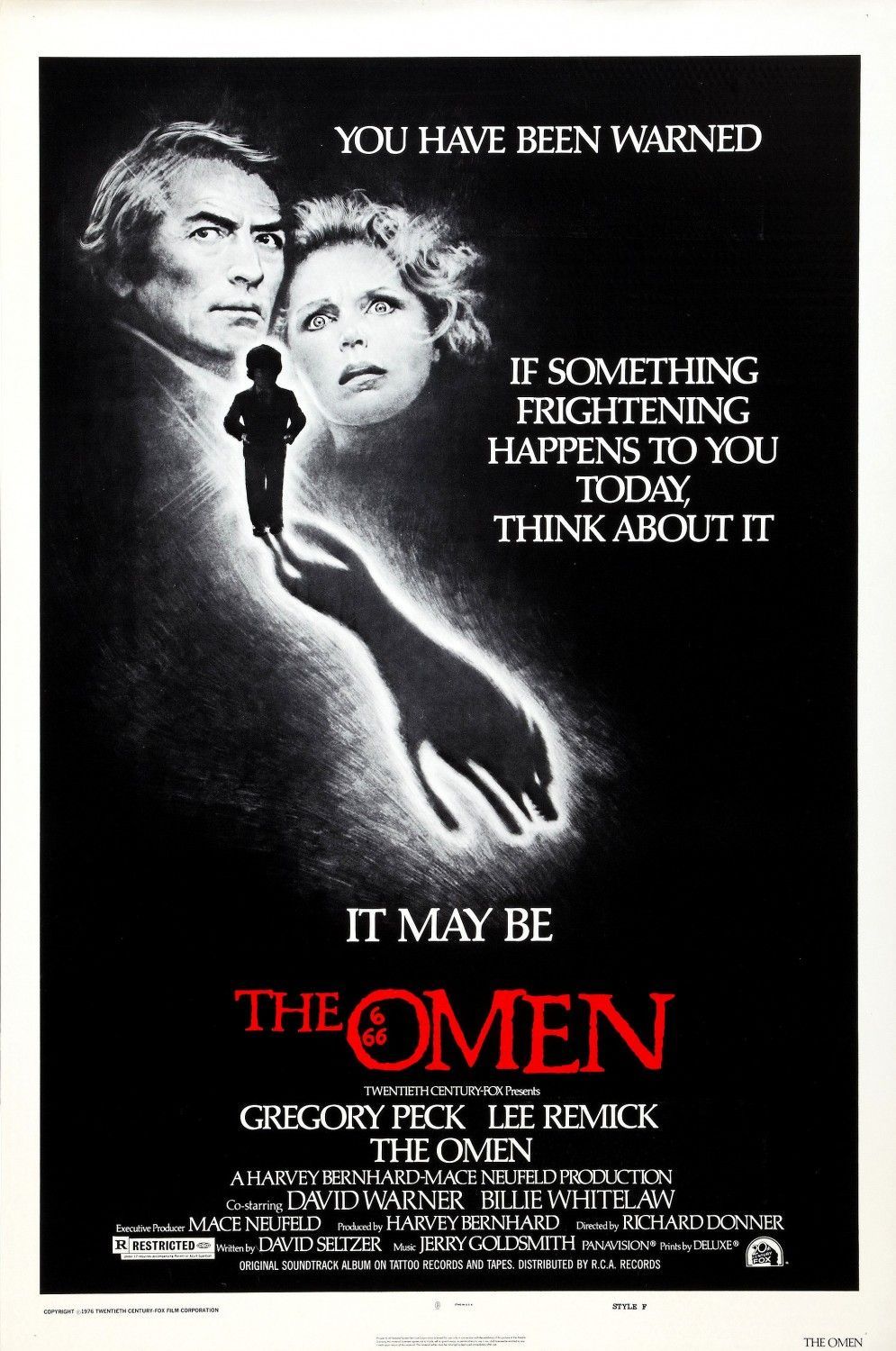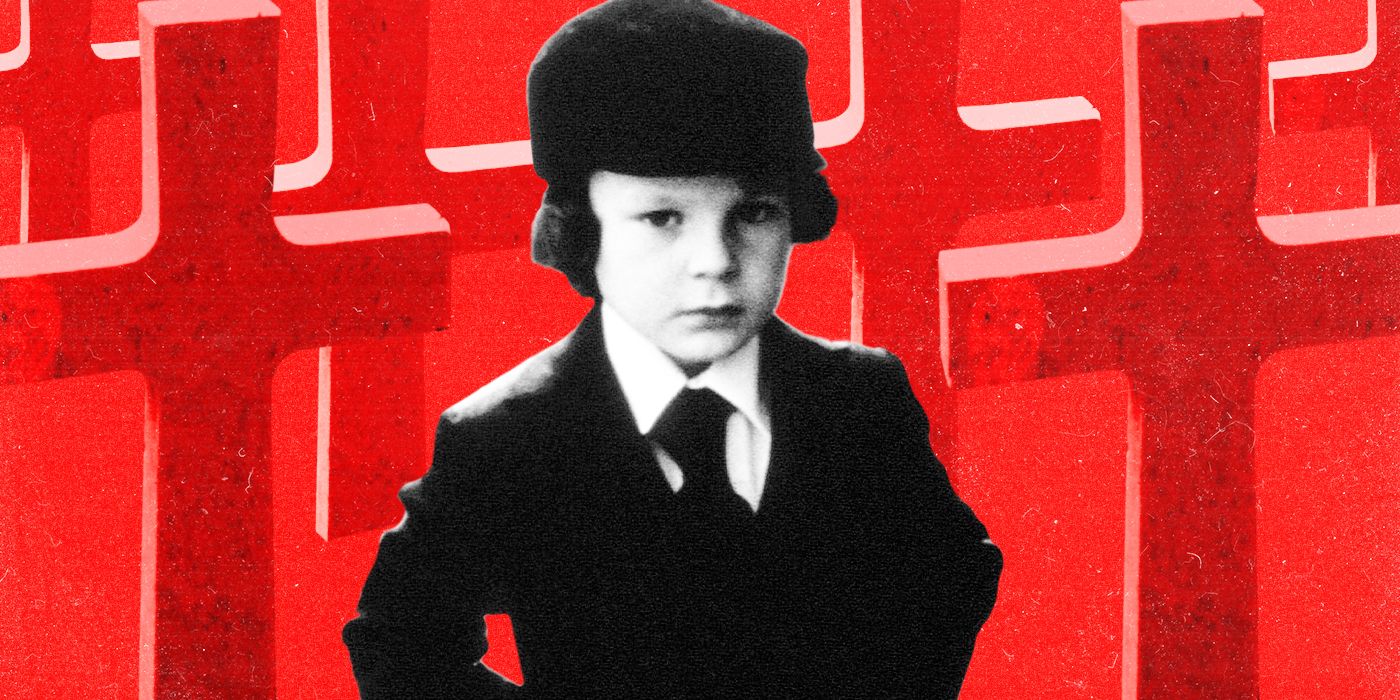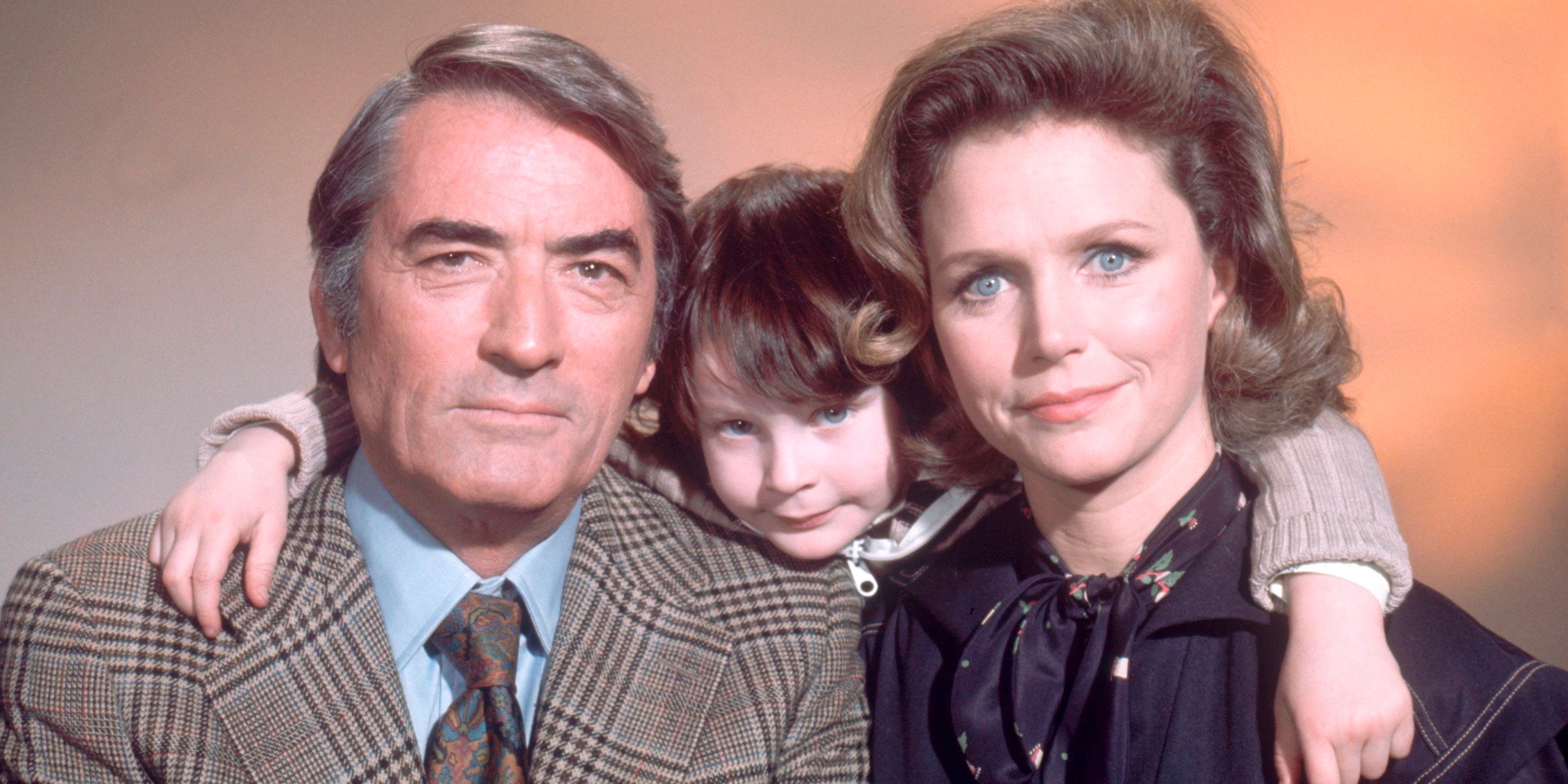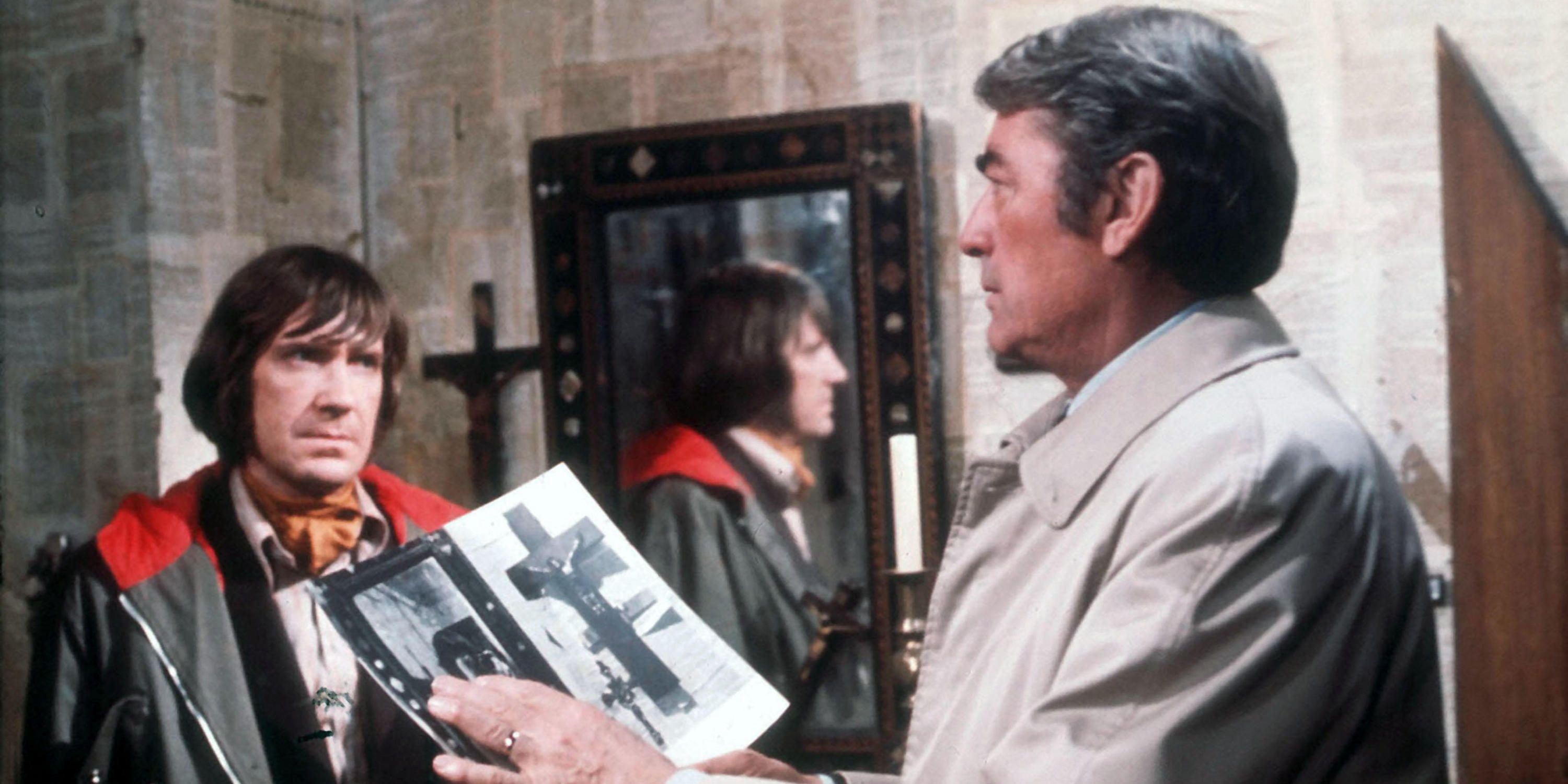Director Arkasha Stevenson's feature film debut The First Omen has opened and is proving to be a scarily good time at the movies, according to reviews. The latest entry in the Omen franchise takes place in 1971 and serves as a prequel to Richard Donner's brooding genre classic — a film that masterfully evoked dread, helped along by a legendary Jerry Goldsmith score. The First Omen sees Nell Tiger Free take on the lead role alongside horror veteran Ralph Ineson (The VVitch and The Pope's Exorcist) and Bill Nighy. The new film serves as a prequel to the 1976 classic, exploring the events leading up to Damien's arrival and how this little boy came to be the Antichrist. As we get ready to jump back to the terrors of the early '70s, it's worth revisiting why this decade was such a golden age for horror — and why the original Omen is a shining example.

The Omen
Mysterious deaths surround an American ambassador. Could the child that he is raising actually be the Antichrist? The Devil's own son?
- Release Date
- June 25, 1976
- Director
- Richard Donner
- Cast
- Lee Remick , Gregory Peck , David Warner , Billie Whitelaw , Harvey Stephens
- Runtime
- 111 minutes
- Writers
- David Seltzer
The 1970s Gave Us Instant Horror Classics
The 1970s unleashed a wave of classics upon the movie-going world, and the original Omen is, of course, one of them — a profoundly atmospheric picture suffused with chills. Indisputably a momentous era in the history of cinema across the world at large, the decade's abundance of creative horror outings is similarly undeniable. Some of the movies hailing from the timeframe became overnight, era-defining sensations — instant classics lapped up by casual audiences and discerning cinephiles alike. Others endeared themselves slowly over time, garnering new fans and more widespread appreciation with age. Obvious winners from the era can be name-dropped forever. Robin Hardy's The Wicker Man (1973) was a shocking exploration of cultism and John Carpenter's monolithic Halloween redefined what can be achieved on a small budget, using low-key effects to generate high-order scares. Giallo horror received a massive boot in the iconic direction with Dario Argento's Suspiria, Nicholas Roeg took slow-building menace and the power of visual motifs to the next level in Don't Look Now (1973) and The Exorcist (1973) is often regarded as the genre's pinnacle for its tireless ability to terrify.
Richard Donner's 1976 film falls more into the psychological camp, a film whose most ardent admirers arrived a little later to the party. Released a mere three years after William Friedkin elicited shock, puzzlement and terror to throughout the world via the masterfully produced The Exorcist, the Jerry Goldsmith-scored Omen quickly gets under the skin, its slinking eeriness unable to be easily shaken away. While the film found fans quickly at the time of its release, its reputation has been fortified over time, as more and more viewers call out that film's strangling dread and bloodcurdling atmosphere. Donner's movie is a runaway train rattling ceaselessly towards a terrifying finale — the conclusion always foregone. Every character's action is rendered almost futile, and the way each key player is essentially stripped of their agency is what makes The Omen at least as terrifying as any of its cinematic brethren. Backlit by a musical score that is close to being unmatchable in its ability to amplify fear, Donner's film deserves to occupy the same hallowed ground as any other revered classic in the vast pantheon of chilling genre fare.
'The Omen' Feels Real Because of Its Grounded Relationships
From the opening titles, it becomes exceedingly plain a classic is on the cards as the music swells outwards like a choir from beyond the grave. Yet what allows The Omen to work as a powerful psychological drama as much as a chilling supernaturally-charged horror is the fact Donner made a concerted effort to establish credible relationships and create deeply concerned, wounded characters. One of the opening shots is of Senator Robert Thorn (Gregory Peck) riding in a taxi through a benighted Rome, reeling from the earth-shattering news his newborn son failed to survive after complications post-birth. With the revelation reverberating in his mind, Thorn is someone so overcome by desperation that impulsive action is taken to smother the grief. Convinced he'd be doing less harm than good by agreeing, on wife Cathy's (Lee Remick) ignorant behalf, to taking an orphaned child in to replace the loss of his biological son, Thorn, a rising figure in politics, inadvertently sets a soon-to-be haunting tale in motion.
Succumbing to the pleas of Father Spilleto (Martin Benson), the decision to raise the child as their own is initially informed by sorrow. And for the first few years, things move fairly typically for the family unit. That is until their child Damien's (Harvey Stephens) birthday, wherein their kindly nanny, bewitched by an unseen force after spying a rottweiler on the fringes of the Thorn property, shockingly meets her demise via a length of rope. It's still a massively unsettling sequence viewed today, its disquiet rendered all the more painful by the subsequent reemergence of peripheral, preexistent grief. When the sinister Mrs Baylock (Billie Whitelaw in a marvelous performance) arrives to be Damien's undercover satanic protector, it's the resultant shattering of domestic trust and relationships that occur that keep the film's rollercoaster momentum steeped in a kind of oddball reality. While the suggestion of the preternatural is everywhere, the humanity of its core characters keeps you believing in the events on-screen.
The film charts the Thorns' journey and Kathy's gradual realization that Damien is not hers so skillfully, that the sense of loss that courses through the film marries up with the visceral frights to deliver an experience wholly impactful. When Thorn is later accosted by the doomed Father Brennan (Patrick Troughton), who maintains Damien is the antichrist personified, he is naturally disbelieving, till Brennan too is delivered a grisly fate via the intervention of a freak spire-oriented "accident." As the "accidents" mount, the tension within the family unit brews, and the performances of its cast deserve credit for playing their parts to an absolute tee. Gregory Peck is phenomenal. Agreeing to appear in the film in 1975 after several other stars declined the part of Thorn, the role should be counted among the Hollywood icon's very best. The emotional honesty, the way bewilderment gives way to protectiveness and incalculable fear is never short of utterly believable. Eventually, grim determination is all that can be clung to. Lee Remick is also strong as a mother whose sense of parenthood deteriorates from fear, her mental state fast-escaping her clutches. All the support players inhabit their roles with gusto, raising the stakes to considerable highs.
'The Omen' Has One of the Best Horror Movie Scores Ever
Much has been said of Jerry Goldsmith's triumphant musical score, but there can never be enough said about its effectiveness. There's no shortage of virtuosic maestros in the art of cinematic music, but what Goldsmith manages to do in The Omen is truly peerless. With an ability to turn innocuous scenes into swirling nightmares, his command of the music's powerful otherworldly language is as on-song as ever in this flick. In fact, his score was hitherto the only Oscar-winning score to feature in a horror film. Goldsmith won the gong after several nominations, and the accolade was well deserved. With its unsettling tones and forbidding choral elements, it's wholly unique.Making a forceful introduction from the get-go, The Omen serves as good a testament as any to Goldsmith's versatility as a craftsman.
When Cathy and Damien venture to the Safari Park, an iconic scene, a mild day trip is turned into something alien and disturbing. The surging percussion and strings give the excursion a malevolent edge even before the baboons begin to wildly attack the vehicle in which Cathy and Damien occupy, disturbed by the child's presence. When Father Brennan is chased by swirling winds, the elements are personified by the rising volume of the heart-racing composition accompanying it. It's as if the atmosphere takes on a semi-human form as it pursues the ill-fated priest.
And at the film's midpoint, after events have escalated beyond the easily explainable, a sequence wherein Thorn attends photographer Keith Jennings' (David Warner) apartment is given a singularly creepy treatment. Jennings informs Thorn that eerie harbingers may be appearing in the photos he is taking, perhaps even preempting deaths. Coupled with some of Brennan's premonitory notes and some oddly-timed cosmic happenings of late, the visual drama is matched only by the music, which fittingly crescendos when Jennings reveals he is involving himself because a self-taken photo suggests he too may be in danger. A terrifying cacophony.
'The Omen' Has Some Horrifically Iconic Scenes
Cinema has provided a few memorable graveyard scenes over the decades. George Romero's Night of the Living Dead sits close to the top of that pile, whose terrifying intro proved an indelible entryway to a seminal film containing one of the all-time great heroes (Duane Jones). Arguably the most atmospheric and deeply frightening moment in The Omen occurs after the hour mark, in what is likely the most effectively shot cemetery scene in horror history. With Cathy in hospital following an attack that could quite easily be framed as an accident (orchestrated behind the scenes by the resolutely evil Baylock), Thorn and Jennings are on the road, desperate to recover answers behind the true identity of Damien. Thorn is also adamant new findings may unveil what really happened to his biological son. After reconnecting with Spiletto (who was a victim in a mysterious hospital fire and is now mostly hidden away from the world), the duo are tipped off to visit Cerveteri, home to an ancient Etruscan graveyard supposedly containing the answers they need.
Cinematographer Don Gilbert (Dr Strangelove, Frenzy, Star Wars) proved an especially steady hand on the set of The Omen, for what he along with the crew achieves through the scene is utterly classic. As Thorn and Jennings navigate the gravestones, and as the wind battles with Goldsmith's gradually-rising musical accompaniment, the haunting location is given the effect of being an inescapable alternate dimension. The discoveries made at the site are shocking. The perspective shifts, which pivot from the graves being unearthed to somewhere behind the treeline (denoting the canine presence watching from afar, bracing for attack).
It's a truly iconic sequence and almost certainly the best cemetery scene in a motion picture. As a point of fact, The Omen is loaded to the hilt with moments rivaling any horror movie before or after. The fate of headstrong Jennings in the town of Megiddo, via a loose sheet of glass, etched itself a place in history. Even more effective is the supremely chilling final act. Thorn, back in England as the darkness closes in, discovers the 666 symbol on Damien via a lingering extreme close-up shot that disarms the viewer through quietude. An unsuspecting Thorn is then set upon by a viciously protective Baylock, who had been lurking off-camera. The execution is superlative.
'The Omen' Remains a Classic of Enduring Power
The Omen is peak '70s horror for its ability to meld pathos and strong characterization with a musical score that reaches extraordinary heights. With the fates of its characters uniformly hanging in the balance throughout the film's duration, it's a flick that operates on an incline — steadily mounting suspense till an almost unbearably tense conclusion. A financial success, Richard Donner's only horror foray is a landmark achievement for its dread-saturated approach. While the director later achieved enormous success with comedic outings, it's a wonder he never drifted back to crafting another psychological thrill-fest, for what the New Hollywood auteur managed to engineer with The Omen remains as striking as ever.
Littered with noteworthy scenes, it's a movie whose expertly crafted buildups pack as much of a wallop as its more outwardly grisly shocks. The decade certainly bestowed a surplus of great films upon audiences and The Omen is a motion picture that has continued to steadily rise in reputation. Standing shoulder to shoulder with the very best, The Omen is a landmark moment in occult horror, one which terrifies through its darkly psychologically screenplay and portentous vibe. Across-the-board technical prowess, bravura performances and a dedicatedly atmospheric tack allow the film to clamber to the top and be considered a cornerstone of the genre.
The Omen is available to watch on Hulu.




